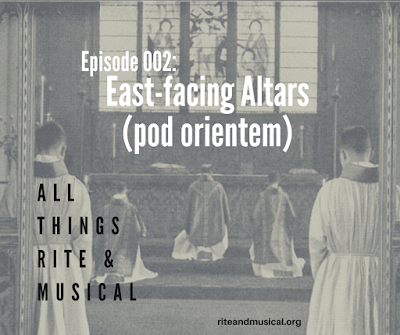002 East-facing Altars (pod orientem)
Some altars are on the (liturgical) East wall, some aren't. What gives? For links for nearly everything we talk about see show notes for Episode 002.
Download this episode (mp3).
Lake Delaware Boys' Camp, Delhi, N.Y.
American Sarum is the organization that held the conference David attended at Christ Church, Bronxville, N.Y.
James Alison on being bored during worship
Oriented Episcopalians (a list of Episcopal churches with East-facing celebration by Richard Mammana). Churches we discuss from his list:
- Trinity on the Green, New Haven, Conn.
- Christ Church, New Haven, Conn.
- National Cathedral, Washington, D.C.
- St. Mary's Chapel
- photos of St. Mary's Chapel: Google image search
- St. Paul's, K St., Washington, D.C.
- Good Shepherd, Augusta, Ga.
Two other churches mentioned:
Christ Church Cathedral, St. Louis, Mo.



This comment has been removed by the author.
ReplyDeleteI meant to do this last week after I listened. First, long time listener; first time commenter. (Ha! I've always wanted to say that.) I found this discussion of the east facing altar very interesting. I am a convert who only ever knew the mass the way it is now. Hearing David's story about the boat and the guy at the front intrigued me. So I really paid attention to what was grasping my attention this Sunday. I'm going to have to vote no on the east facing altar. It's not the theater of watching the priest perform that speaks to me; it's the elements themselves. I am focused on the bread and the wine and I would hate it if I couldn't see them. Jesus is known to me in the breaking of the bread.
ReplyDeleteThanks for your comment, Michelle! Something that takes on more significance in an East-facing celebration, I suppose, is the Elevation -- of each element independently, and then of the elements together at the conclusion of the Eucharistic Prayer. Many clergy perform this same manual act during a 'versus populum' (facing the people) celebration, but it certainly comes from this idea of raising the elements up during an East-facing celebration. And I bet a big part of why this evolved is so that the elements could be seen at these critical points. Bells were even rung to make sure you knew to look up!
Delete-David, ATRM
I started listening this weekend - I've enjoyed it so far. We actually decided to move our daughter's baptism from late October to All Saints Sunday (at All Saints in Birmingham) after listening to the baptism episode. Thanks!
ReplyDeleteRegarding the east-facing altar.... This is entirely unrelated to Vatican II or practice of the day. But many organizations with rituals - which have an altar or focal point - require that the leader be on the opposite side of the altar from those viewing the ceremony. The idea is that the altar and its contents be the focal point of those in attendance, rather than the, in this case, Celebrant. Additionally, crossing in front of the altar breaks the line of vision to the focal point, symbolically breaking the connection.
As you stated in the episode, the Celebrant/priests are considered to just be a part of the congregation. On one hand, one could use that to reason to infer the Celebrant should be on the same side as the congregation. On the other hand, one could infer that being on the other side of the altar follows symbolically in the connection to the altar.
Just some thoughts as I listened. I'm enjoying so far. Keep at it!
James Warren
Very well done. But I think there is some confusion of the Deisis icon with the Rood screen. On the Rood, Christ-on-the-cross is flanked by Mary, the Mother of God, and St. John the Divine. In the Deisis, Christ-enthroned-in-glory is flanked by Mary, the Mother of God, and St. John the Baptist. Is the chapel you mentioned dedicated to St. john the Divine or St. John the Baptist?
ReplyDeleteKeep up the good podcasting!
Stephen